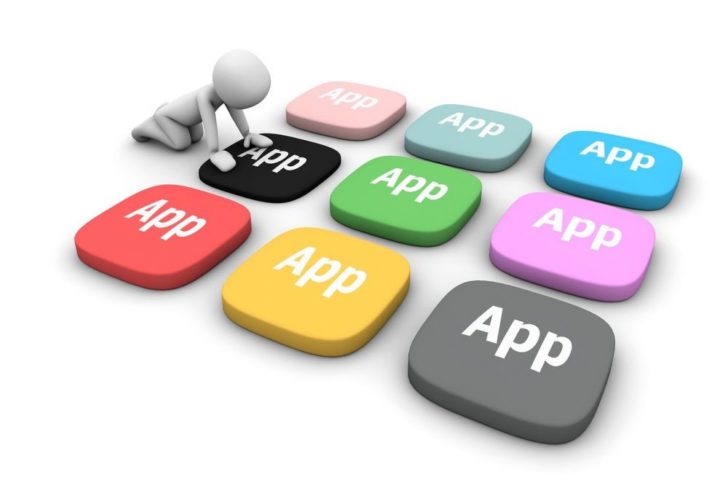ChatGPT App: Revolutionizing Communication with Artificial Intelligence

[Introduction]
In the age of technology, communication has evolved tremendously. From basic messaging to video calls, we are constantly seeking new and efficient ways to connect with each other. One such groundbreaking innovation is the ChatGPT App, powered by artificial intelligence (AI). This article will provide a comprehensive overview of the ChatGPT App, its historical development, and why it is a game-changer for tech enthusiasts.
[Section 1: Introducing ChatGPT App]

The ChatGPT App is an AI-based application that uses advanced natural language processing algorithms to facilitate interactive conversations. It allows users to engage in chat-like conversations with AI-powered virtual assistants, simulating a human-like text-based experience. This technology has gained tremendous popularity due to its ability to understand and respond to complex queries, making it an invaluable tool for various applications.
Highlighted bulletpoints:
– ChatGPT App: Revolutionizing communication with AI technology
– Interactive chat-like conversations with AI-powered virtual assistants
– Simulating human-like text-based experience
– Understanding and responding to complex queries
[Section 2: Evolution of ChatGPT App]
The historical development of ChatGPT App is a testament to the incredible progress made in the field of AI. The app started as an experimental project by OpenAI, an AI research laboratory, with the objective of building an advanced conversational AI model that could understand and generate human-like text.
Initially, ChatGPT relied on a single model that was trained using large amounts of text data from the internet. As the model iterated, its performance improved significantly, gradually gaining the ability to provide more coherent and contextually appropriate responses. However, despite these advancements, the initial version had limitations, often producing inaccurate or nonsensical replies.
OpenAI then introduced reinforcement learning techniques to refine ChatGPT. By allowing the model to interact with human AI trainers and receive feedback on its responses, it became more accurate and configurable. This marked a major milestone in the development of ChatGPT App, as it vastly improved the overall user experience.
Highlighted bulletpoints:
– Experimental project by OpenAI
– Building an advanced conversational AI model
– Initial version with limitations
– Introduction of reinforcement learning techniques
– Interaction with human AI trainers for improvement
[Section 3: Unlocking the Potential]
ChatGPT App has unlocked countless possibilities for tech enthusiasts. With its ability to hold dynamic and engaging conversations, it has become an invaluable resource for various industries. Let’s explore some key use cases of the ChatGPT App:
1. Customer Support: Companies can integrate ChatGPT into their customer service platforms to provide instant and accurate responses to customer queries. This reduces the need for human intervention and enhances customer satisfaction.
2. Personal Assistants: ChatGPT App can serve as a personalized AI assistant, helping users with tasks like scheduling appointments, managing to-do lists, and providing relevant information based on individual preferences.
3. Language Learning: Language learners can practice their skills by conversing with ChatGPT, receiving feedback on grammar, vocabulary, and pronunciation. This immersive learning experience fosters language proficiency.
4. Content Generation: Content creators can leverage the creative capabilities of ChatGPT to generate fresh ideas, improve the writing process, and enhance productivity.
Highlighted bulletpoints:
– Customer support automation
– Personalized AI assistants
– Language learning companion
– Content generation capabilities
[Section 4: The Future of ChatGPT App]
As technology continues to advance, the future of ChatGPT App holds immense potential. OpenAI plans to further refine the app with ongoing research and development. Improving the model’s accuracy, reducing biases, and expanding its knowledge base are among the key focus areas.
Additionally, OpenAI aims to make the app more accessible and customizable for users. This includes introducing features like fine-tuning, enabling users to customize the behavior and responses of the AI model according to their specific needs.
: “ChatGPT App in Action: Exploring the Power of AI Communication”]
Highlighted bulletpoints:
– Continuous research and development by OpenAI
– Improved accuracy, reduced biases, and expanded knowledge base
– Introduction of fine-tuning for customization
Conclusion:
The ChatGPT App is revolutionizing communication by harnessing the power of artificial intelligence. From its humble beginnings to its current state, ChatGPT has come a long way, offering immersive and engaging conversations. With endless possibilities and a promising future, this app has rightfully gained popularity among tech enthusiasts. As we move forward, the advancement of AI technology promises even more exciting innovations in the realm of communication.





















